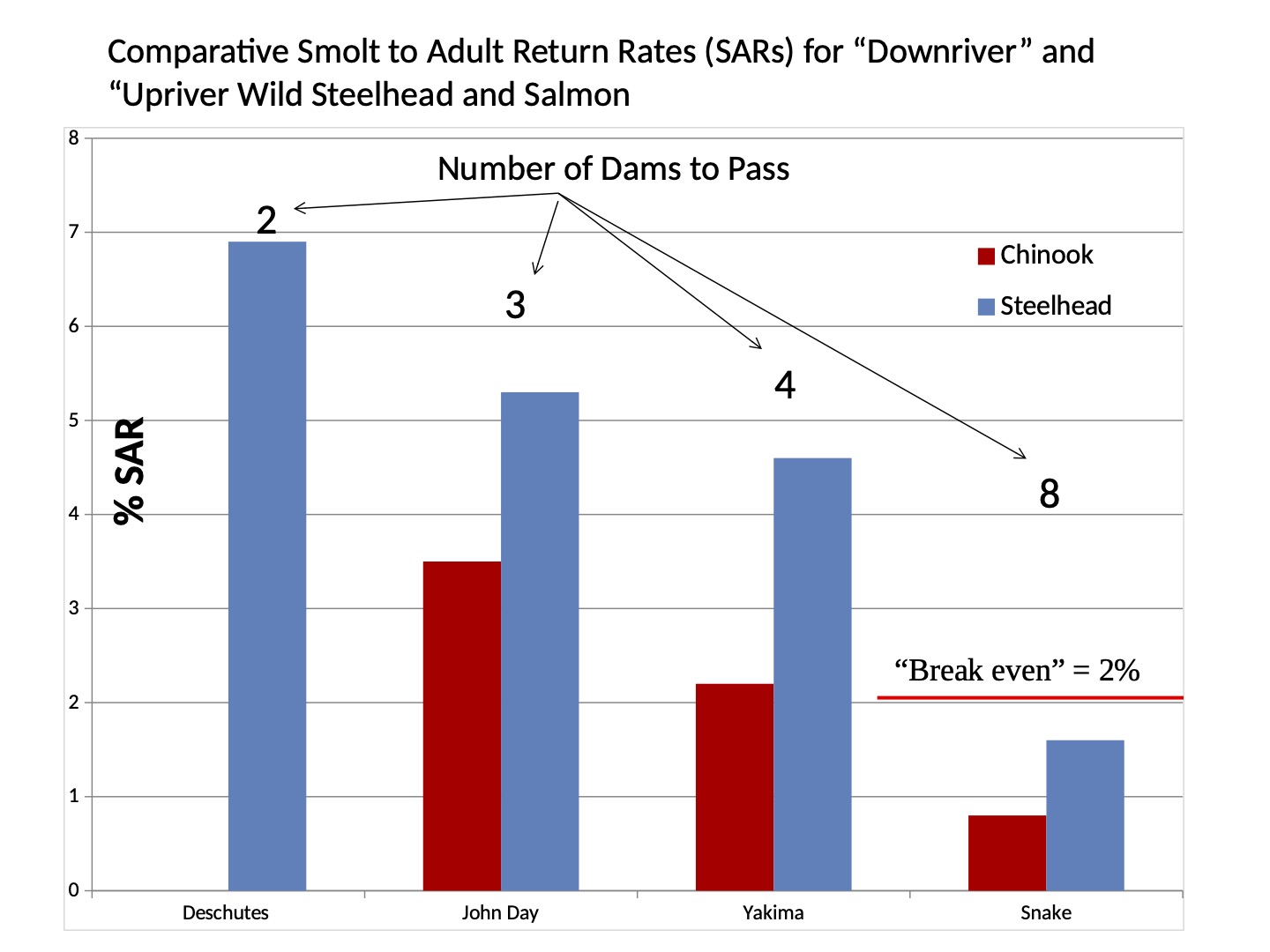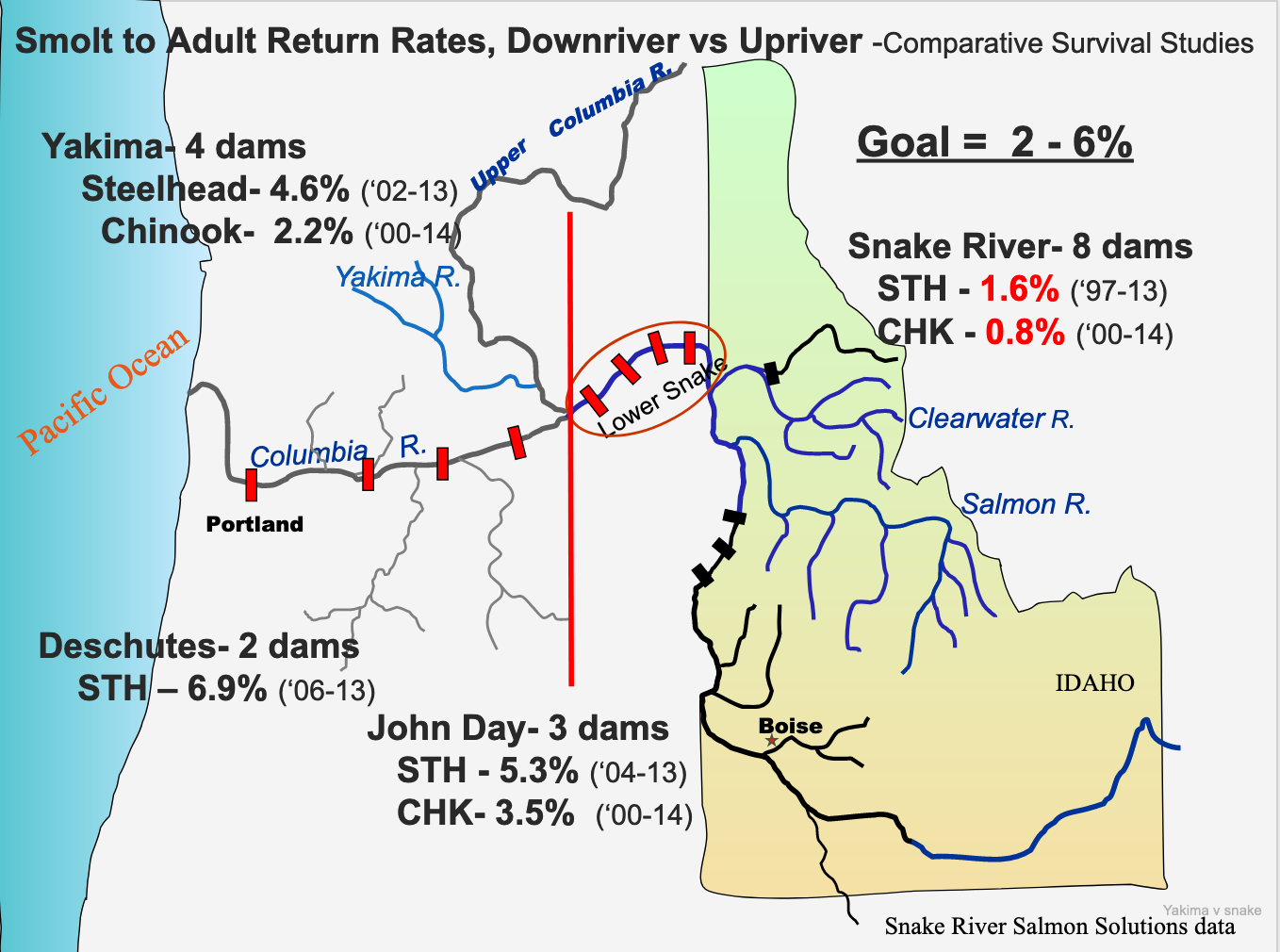By Dave Canamella, Idaho Chapter Salmon Committee Chair
The idea/hypothesis that the ocean is the cause for the decline and current at-high-risk-of-extinction status of our Snake River salmon runs (chinook, sockeye, and steelhead trout) has lingered long enough, something like 20 years now. It was resurrected in a recently released scientific writing, the research for which was funded and re-funded by the Bonneville Power Administration. The pro-dammers continue to cling to this baseless “it’s the ocean” claim.
In order for the ocean explanation to hold water, it must answer, with data, a few questions. But first let’s set the playing field. Snake River fish and fish from downriver tributaries to the Columbia River, namely the John Day, Deschutes, and Yakima rivers, have been going to the same ocean and the same place in the ocean at the same time, for about 12,000 years—and it has proved a very successful strategy. Throughout history, the productivity (“friendliness”) of the ocean has waxed and waned, and yet, the salmon have survived. Notably, abundance varied, but they never tended toward extinction. Also, its important to recognize that because these populations were large, there was always room for error- they could withstand the unproductive ocean years, but bounce back- resiliency in numbers. That resiliency no longer exists as our populations are hovering near the X-axis.
So, if it’s the ocean:
Why do our stocks (Snake River stocks above 8 dams—the four Columbia River dams and the four lower Snake River dams) begin their decline following the construction of the four lower Snake River dams, while the downriver stocks (above 2, 3, and 4 Columbia River dams) not suffer the same fate? Our stocks are all below the replacement level of 2% Smolt-to-Adult Survival Rate (SAR), while the downriver stocks display SARs as high as 5% for steelhead from the Deschutes (above 2 dams) and the John Day (above 3 dams). SARs for John Day and Yakima (4 dams) chinook salmon are 3.6% and 2.5%, respectively. Our Snake River stocks, which used to outperform their downriver cousins, now suffer from SARs of 1.4% for steelhead and 0.7% for spring/summer chinook. This is a tragic waste of the best spawning and rearing habitat in the basin if not in the world: Consequently, egg-to-smolt survival has not changed- a pair of salmon produce just as many smolts as they always have.


Does the ocean suddenly develop a mechanism to selectively kill Snake River fish? If so, is it just coincidence that it acquires this skill in synchrony with the completion of the four lower Snake River dams—the dams the downriver cousins don’t encounter? After 12,000 years of success on the same routes in the ocean, do our fish suddenly decide to go someplace to die? Where are the data?
The upriver/downriver studies conducted by the Fish Passage Center and Comparative Survival Studies team of scientists provide the scientific slam dunk. Only the difference in the number of dams to pass (8 vs 4 or less) can explain why our fish are on an extinction trajectory, while the others are not. The data are abundant and irrefutable.
No one disagrees that the ocean plays a large role in salmon survival, but the ocean is not responsible for the current status of our Snake River runs. And in fact, now more than ever it is crucial that we get as many smolts as possible to the ocean, in a healthy condition, so that they can take advantage of the good years and build their numbers so they can survive the poor ones.
David A. Cannamela, M.S.
Master of Science, Aquatic Science, Murray State University/Idaho State University
Fisheries Research Biologist/Fisheries Biologist, Idaho Dept. Fish & Game, retired
Boise, Idaho
Read the letter signed by 68 of the nation's primier salmon and fisheries scientists to Northwest Governors and Members of Congress urging the removal of the four lower Snake River dams to save the salmon.